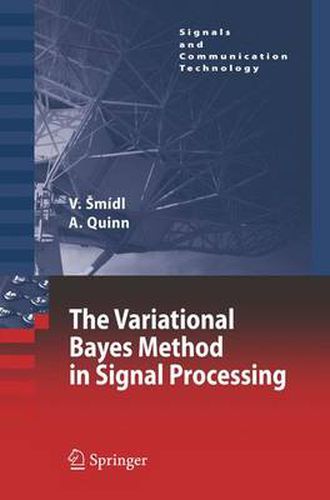Readings Newsletter
Become a Readings Member to make your shopping experience even easier.
Sign in or sign up for free!
You’re not far away from qualifying for FREE standard shipping within Australia
You’ve qualified for FREE standard shipping within Australia
The cart is loading…






This title is printed to order. This book may have been self-published. If so, we cannot guarantee the quality of the content. In the main most books will have gone through the editing process however some may not. We therefore suggest that you be aware of this before ordering this book. If in doubt check either the author or publisher’s details as we are unable to accept any returns unless they are faulty. Please contact us if you have any questions.
Gaussian linear modelling cannot address current signal processing demands. In moderncontexts,suchasIndependentComponentAnalysis(ICA),progresshasbeen made speci?cally by imposing non-Gaussian and/or non-linear assumptions. Hence, standard Wiener and Kalman theories no longer enjoy their traditional hegemony in the ?eld, revealing the standard computational engines for these problems. In their place, diverse principles have been explored, leading to a consequent diversity in the implied computational algorithms. The traditional on-line and data-intensive pre- cupations of signal processing continue to demand that these algorithms be tractable. Increasingly, full probability modelling (the so-called Bayesian approach)-or partial probability modelling using the likelihood function-is the pathway for - sign of these algorithms. However, the results are often intractable, and so the area of distributional approximation is of increasing relevance in signal processing. The Expectation-Maximization (EM) algorithm and Laplace approximation, for ex- ple, are standard approaches to handling dif?cult models, but these approximations (certainty equivalence, and Gaussian, respectively) are often too drastic to handle the high-dimensional, multi-modal and/or strongly correlated problems that are - countered. Since the 1990s, stochastic simulation methods have come to dominate Bayesian signal processing. Markov Chain Monte Carlo (MCMC) sampling, and - lated methods, are appreciated for their ability to simulate possibly high-dimensional distributions to arbitrary levels of accuracy. More recently, the particle ?ltering - proach has addressed on-line stochastic simulation. Nevertheless, the wider acce- ability of these methods-and, to some extent, Bayesian signal processing itself- has been undermined by the large computational demands they typically make.
$9.00 standard shipping within Australia
FREE standard shipping within Australia for orders over $100.00
Express & International shipping calculated at checkout
This title is printed to order. This book may have been self-published. If so, we cannot guarantee the quality of the content. In the main most books will have gone through the editing process however some may not. We therefore suggest that you be aware of this before ordering this book. If in doubt check either the author or publisher’s details as we are unable to accept any returns unless they are faulty. Please contact us if you have any questions.
Gaussian linear modelling cannot address current signal processing demands. In moderncontexts,suchasIndependentComponentAnalysis(ICA),progresshasbeen made speci?cally by imposing non-Gaussian and/or non-linear assumptions. Hence, standard Wiener and Kalman theories no longer enjoy their traditional hegemony in the ?eld, revealing the standard computational engines for these problems. In their place, diverse principles have been explored, leading to a consequent diversity in the implied computational algorithms. The traditional on-line and data-intensive pre- cupations of signal processing continue to demand that these algorithms be tractable. Increasingly, full probability modelling (the so-called Bayesian approach)-or partial probability modelling using the likelihood function-is the pathway for - sign of these algorithms. However, the results are often intractable, and so the area of distributional approximation is of increasing relevance in signal processing. The Expectation-Maximization (EM) algorithm and Laplace approximation, for ex- ple, are standard approaches to handling dif?cult models, but these approximations (certainty equivalence, and Gaussian, respectively) are often too drastic to handle the high-dimensional, multi-modal and/or strongly correlated problems that are - countered. Since the 1990s, stochastic simulation methods have come to dominate Bayesian signal processing. Markov Chain Monte Carlo (MCMC) sampling, and - lated methods, are appreciated for their ability to simulate possibly high-dimensional distributions to arbitrary levels of accuracy. More recently, the particle ?ltering - proach has addressed on-line stochastic simulation. Nevertheless, the wider acce- ability of these methods-and, to some extent, Bayesian signal processing itself- has been undermined by the large computational demands they typically make.